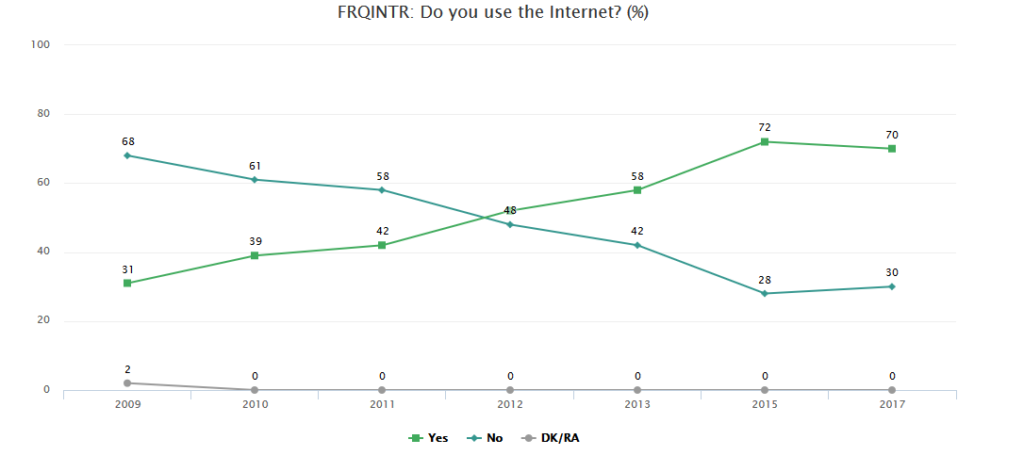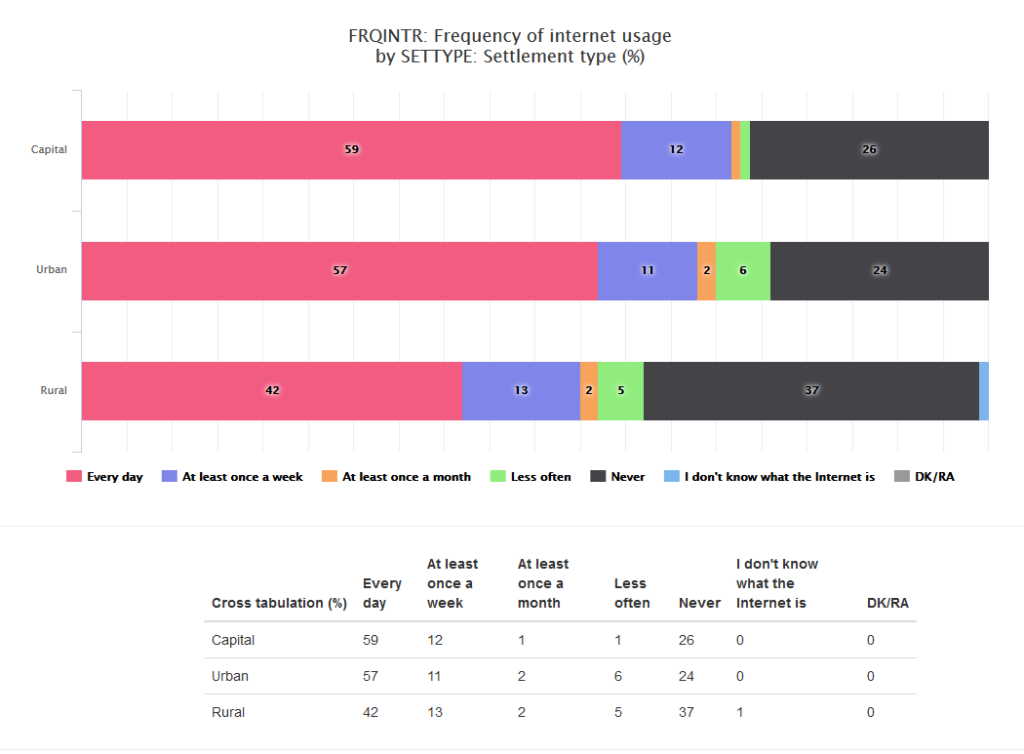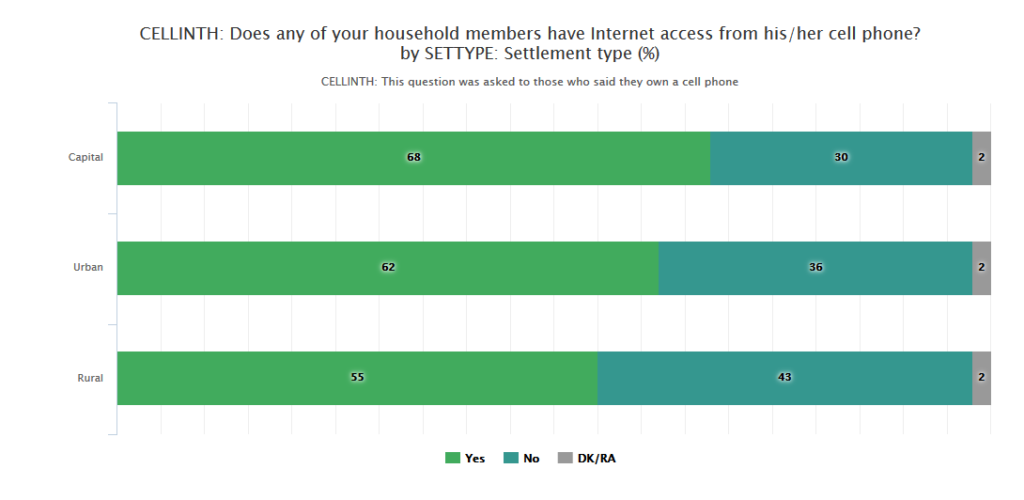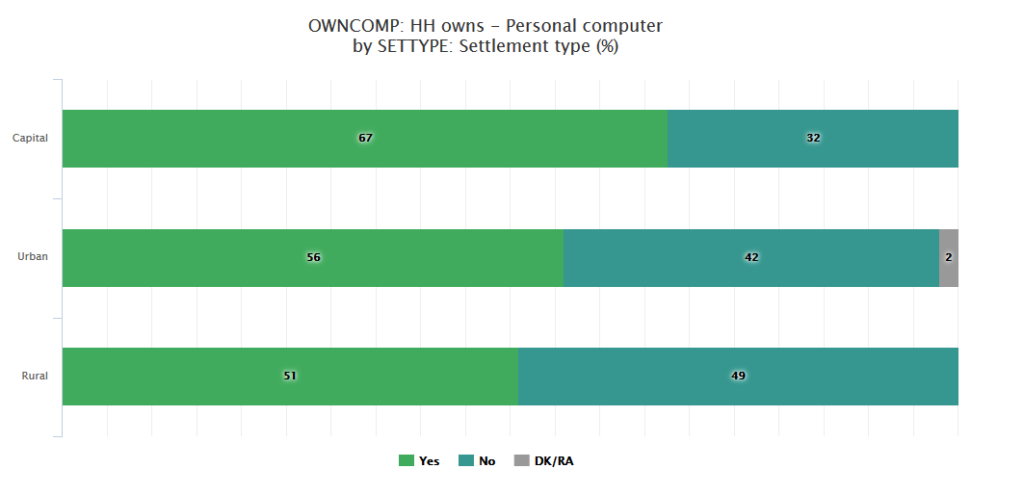2017 Internet access in Armenia
With the move toward online learning all over the world, someone asked me about Internet access in Armenia. The most recent publicly available data that we have is from the 2017 Caucasus Barometer. Here are a few relevant statistics. Please note that the survey respondents are a mix of household answers (like owning a computer) and individual answers (frequency of Internet use), so we are making some methodological leaps in claiming that this would reflect the access that young people would have.
It is difficult to ascertain the presence of children in the household using the Caucasus Barometer online analysis tool. When I have some time I will create a variable that subtracts the number of adults in the household from the total number of household residents to create a new variable called “Number of children” — I’d like to use that to look at all of the analyses described below in the future.
Another caveat – in homes across the world, adults working from home are having to share their technology with their children. There may also be greater demands on home Internet access and adult work use becomes prioritized over children’s.
Analysis
Overall, 29% of Armenia adults never access the Internet. This has remained fairly stable for the past few years. The 2017 CB did not ask about why people did not use the Internet, but in previous years, the answered varied and were not all tied to resource access issues.

Home Internet access is far more available in the capital city, although mobile Internet (and nearly two-thirds of Armenians have mobile Internet) certainly bridges that gap for many households.
Nonetheless, in 2017, over a third of rural respondents never accessed the Internet.

Mobile Internet does vary a bit by urbanness. Two-thirds or nearly two-thirds of Yerevan residents and regional urban center residents have mobile Internet, while a little over half of rural residents do.

While mobile phones have come a long way (and nearly all Armenians have owned a mobile phone for over a decade), no one can deny that some activities are conducted more easily using a personal computer. As of 2017 58% of households had a computer. This does not mean that people do not have access to computers at cafes, work, or school. However, in terms of considering distance learning or working from home, the lack of a computer may be a barrier for some.
Urbanness has always been an important part of the Armenian digital divide story. Personal computer ownership is far higher in the capital (67%) than in regional urban environments (56%) or rural areas (51%).
